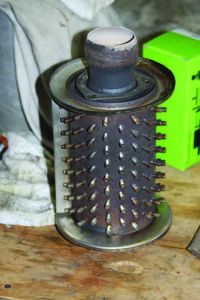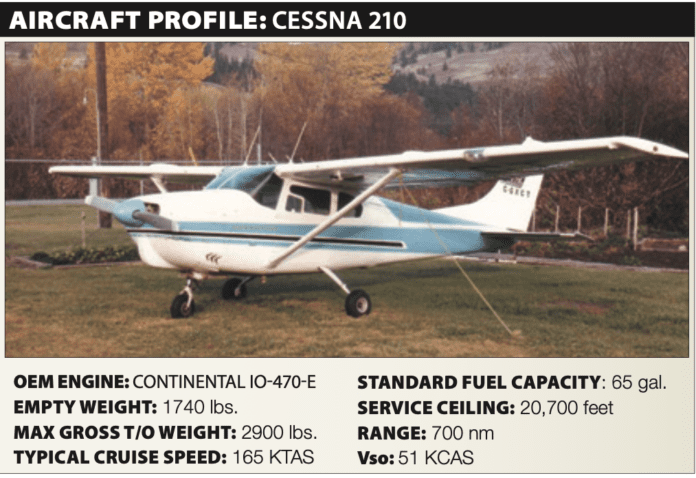Airframe icing can be found year-round, depending on geography and altitude. In North America, we’re heading into the season when pilots of personal airplanes, which generally don’t fly high enough to worry about ice most of the year, need to factor it into their planning and execution. Even if you’re flying something with a form of ice protection more capable than a warm pitot tube.
One of the things about in-flight airframe icing is it’s relatively unpredictable: A single ice encounter that doesn’t present an operational hazard—a glazed windshield, for example—in no way implies the next one will be as benign.
There’s no magic bullet to avoiding in-flight icing except to remain outside of conditions where it can form. For most of us, this means changing our preferred altitude, going around areas where it’s forecast to be and/or altering our schedule. It also can mean staying on the ground.
If it does form and you’re flying something lacking useful protections, we strongly advise getting out of it. Often that means changing altitude, but whether to descend or climb depends on the conditions. Turning around also works. Don’t forget to give a Pirep, so the guy or gal behind you knows what to expect.
Ice on the airframe, of course, adds weight. But its most insidious effect is creating parasite drag and altering the shape of the airfoils keeping us aloft: the wings, the propellers and the tail. And if you’re one believing the maxim “it never rains; it pours,” it’s likely something else has, can or will go wrong, further complicating your workload and limiting your options. Here’s a recent example.
BACKGROUND
On October 26, 2020, at 1558 Central time, a Cessna 210 was destroyed when it collided with terrain after its pilot apparently lost control. The instrument-rated private pilot (male, 69) was fatally injured. Instrument conditions prevailed; the flight operated on an IFR flight plan, and departed Belen, N.M., for Corsicana, Texas, at an unspecified time.
It was a high-workload flight. The pilot had difficulty communicating with ATC and experienced icing conditions, requesting lower altitudes multiple times. At 1454, the pilot decided to to divert to Lubbock, Texas, “for fuel considerations,” and was told to expect the RNAV (GPS) Y procedure for Runway 35L. During the approach, he reported experiencing icing and was in freezing rain. Before being cleared for the procedure, ATC vectored the flight to a different initial approach fix.
After crossing the intermediate fix and turning inbound, groundspeed gradually decreased from about 80 knots to about 50, as the pilot reported “an autopilot issue.” The airplane crossed the final approach fix at the proper altitude and 48 knots groundspeed, then turned left to the south-southeast and descended. The airplane continued to descend and then made a sharp left turn before the data ended.

According to NTSB Safety Alert SA-069, Pilots: Prevent Carbon Monoxide Poisoning, published in September 2017, “Pilots often overlook or dismiss the onset of symptoms and don’t connect them with the possibility of exposure to CO. Continued exposure increases risks to pilots, including impaired judgment and decreased ability to control the airplane and, eventually, incapacitation and death.” The Safety Alert also recommends:
- Install a CO detector and replace the device and its batteries in accordance with manufacturers’ guidelines. Detectors with aural and visual alerts are more likely to draw your attention and alert you to a potential hazard.
- During scheduled inspections, make sure your mechanic thoroughly examines exhaust systems, air ducting, firewalls and door/window seals.
- Be informed and familiarize yourself with your airplane’s exhaust system. Review and comply with any ADs, advisory circulars and service bulletins regarding the exhaust system.
- During preflight inspections, check exhaust system security and condition. If you see signs of soot or exhaust flames, don’t fly the airplane until it is examined by a mechanic.
- During flight, if you believe you have been exposed to CO, don’t hesitate to act.
INVESTIGATION
The pilot purchased the airplane in Nebraska three days before the accident flight, and flew it to New Mexico. On arrival, he told his girlfriend that he felt sick during the flight. She reported he was sick and miserable all weekend, suffering queasiness, fatigue, dizziness and a general malaise. The airplane was not equipped with any form of airframe ice protection or with a carbon monoxide detector. Maintenance records show the airplane’s annual inspection was completed seven hours before the accident flight. The airplane’s fuel tanks were filled the morning of the accident.
Archived ForeFlight information indicate the accident pilot requested a weather briefing for the planned flight at 1246. The briefing included current Metars, Pireps, Airmets, a center weather advisory, a surface analysis chart, a graphical forecast for aviation, terminal aerodrome forecasts, turbulence cross-section information and winds aloft. According to ForeFlight, the pilot accessed convective weather imagery at 0728 and 0758.
Precipitation in the accident region was very light, with light accumulating freezing drizzle reported at the surface. A center weather advisory and Airmets for the accident site, and surrounding area, advertised freezing rain, freezing drizzle and light snow, along with moderate or greater icing conditions.
A Lubbock police officer observed the accident and reported the weather was cloudy and icy with mist. The airplane impacted a residential area about 200 yards from the final recorded ADS-B point. A post-crash fire consumed most of the fuselage and inboard sections of each wing. Despite the fire, FAA inspectors found numerous chunks of ice ranging from one to two inches thick in the wreckage near the wings, and ice still attached to some of the airplane’s leading-edge surfaces.
Examination of the airplane revealed the cabin air heat exchanger contained cracks in the metal barrier that separated the engine exhaust gas from cabin air. The branching cracks exhibited fracture faces with corrosion and deposits on the surface consistent with the cracks being present well before the accident.
Toxicology testing detected a carboxyhemoglobin level of 13 percent. According to the NTSB, similar carbon monoxide (CO) levels may cause headaches, nausea and mild confusion.
PROBABLE CAUSE
The NTSB determined the probable cause(s) of this accident to include: “The pilot’s improper decision to fly into icing conditions with an airplane that was not equipped for icing, which led to structural icing and a subsequent loss of airplane control, and the pilot’s impairment from carbon monoxide poisoning due to a cracked heat exchanger. Contributing to the accident was the pilot’s self-induced pressure to complete the flight due to the incoming adverse weather conditions and the inadequate inspection of the cabin air heat exchanger.”
According to the NTSB, “While the pilot reported an autopilot issue, it is likely that the airplane had accumulated enough structural ice that the autopilot had difficulty functioning properly. Based on the evidence, the accident is consistent with the pilot not able to maintain control of the airplane.”
Airframe ice brought down the airplane, but CO poisoning from a cracked heat exchanger created the confusion and discomfort the pilot experienced, impairing his decision-making.




